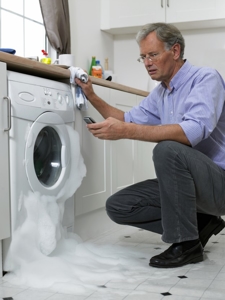
Dealing with water damage is one of the most challenging emergencies a homeowner can experience. When flooding occurs, knowing how to respond within a timely manner is important to prevent further problems from developing. Since water damage can come from multiple sources, using specific procedures to minimize loss is essential.
The professionals at ServiceMaster Restore® are familiar with the risks associated with water damage to your home. Learn more about where Category 2 water damage comes from and what you can do to keep your property and family safe with the following information.
Understanding the different categories of contaminated water
One of the most critical steps to recovering from water damage is determining what kind of contamination you're dealing with. The Institute of Inspection Cleaning and Restoration Certification (IICRC) classifies three different types of contaminated water based on:
- The source of the water damage
- The length of exposure to the structure
- The likelihood of harmful chemicals or contaminants that may be present
What is Category 2 water?
Also referred to as gray water or sullage, Category 2 water damage may contain some amount of contamination that could be harmful to humans and animals. The most common sources of Category 2 water damage include toilet bowls containing urine, water from a dishwasher or washing machine, and flood damage caused by sump pump failure.
What are the risks of Category 2 water?
Category 2 water could pose several health risks stemming from additives used during washing, bathing, cleaning or cooking. Substances like soap particles, oils, grease, food residue, bleach, hair and dead skin cells found in Category 2 water could allow disease-causing organisms to be transferred through contaminated hands or direct contact with broken skin.
Time and temperature can cause gray water to become progressively contaminated. If left untreated, Category 2 water can turn into Category 3 water very quickly due to bacteria growth, which poses the risk of serious illness or even death. As with any form of water damage, without prompt action, moisture can allow dangerous mold to grow, too.
How to clean Category 2 water
Every water damage issue is unique, so the process of cleaning Category 2 water after flooding will vary. However, there are certain guidelines recommended by organizations such as the Environmental Protection Agency (EPA) and the IICRC that may be useful for mitigating damage. These guidelines may include the following:
- Removing water and drying the structure: All contents of the house should be dried, including drywall, flooring, materials, carpet, rugs and upholstered furniture.
- Removing porous materials: Items like wood, carpets, drapes and insulation that are porous should be removed and discarded to reduce the likelihood of toxic mold growth.
- Cleaning hard surfaces: Different disinfectants and cleaning agents must be used to remove mold and water damage from salvageable materials.
- Cleaning or disinfecting HVAC equipment: Cleaning, removing or replacing HVAC equipment that may recirculate mold spores can help keep your home and your family safe.
Since Category 2 water can cause extensive, ongoing damage to your home, you should always leave the cleaning process to the professionals. An experienced restoration company like ServiceMaster Restore understands the implications of water damage and will work to fix the problem, fast. Available 24/7 every day of the year, we specialize in performing residential water damage services that adhere to IICRC standards to help get your home back to normal as quickly as possible. Contact us today to learn more.


